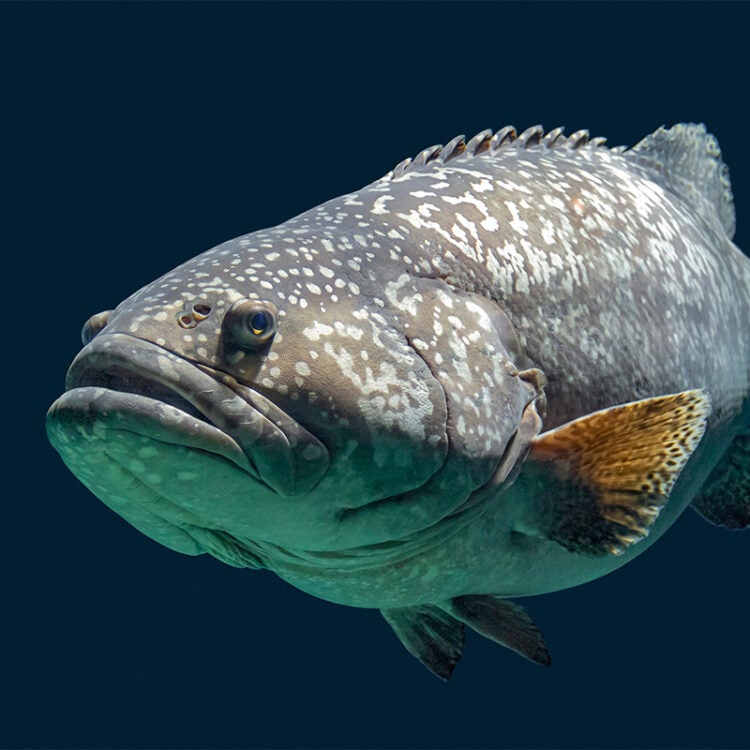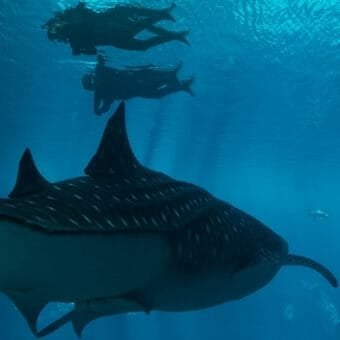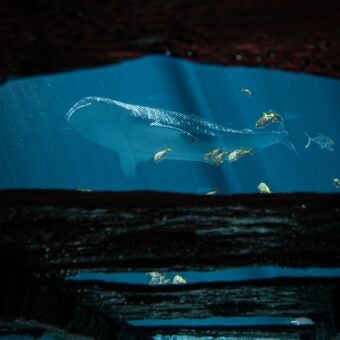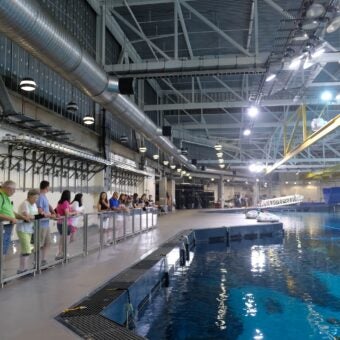-
Size
6.2 feet (1.9 m) -
Diet
Fish, sharks, juvenile sea turtles and crustaceans -
Range
Indo-Pacific -
Habitat
Tropical shallow reefs, caves, wrecks and estuaries
Physical Characteristics
- Largest of all coral reef-dwelling bony fish.
- Common length of 6.2 feet (1.9 m), with a maximum length of 9 feet (2.7 m).
- One of the largest recorded was 9.8 feet (3 m) and weighed more than 882 lbs. (400 kg).
- Has a very large mouth that expands and protrudes to create a strong suction to draw in prey.
- The mouth has at least seven rows of teeth in the middle of the lower jaw.
- The giant grouper’s eyes function effectively in dim light, which gives it an advantage over its prey during dawn and dusk feeding times.
- Eyes also rotate so grouper can see approaching prey without moving its head.
- Juvenile giant grouper are bright yellow with large, irregular black or dark brown bars.
- As adults, irregular patterns break up and their coloring becomes a muted, mottled olive-gray.
Animal Fact
Because it is long lived and late to reproduce, the giant grouper is highly susceptible to overfishing. Fishermen generally target larger individuals, meaning that, frequently, too many breeding specimens are removed from a population for it to sustain itself.
Diet / Feeding
- Consists of fish, sharks, juvenile sea turtles and crustaceans, including spiny lobsters and mud crabs.
- Ambush predator that lies in wait while hiding in holes, crevices and reef overhangs.
- Swallows food whole.
- Occupies the upper end of the food chain.
- Few reside in each area; few are found on any one reef.
Range / Habitat
- Occurs in the Indo-Pacific from the Red Sea to Algoa Bay, South Africa through the Hawaiian and Pitcairn islands and also Australia.
- Found in tropical shallow reefs, caves, wrecks and estuaries commonly to 164 feet (50 m) deep. The full depth range is 13-328 feet (4-100 m).
Reproduction & Growth
- Protogynous hermaphrodite; starts out life as a female and can later change gender to become male.
- Does not reach sexual maturity until it is about 20 years old. Fishing usually removes the largest, and therefore oldest, fish first.
Conservation Status
- “Data Deficient” on IUCN Red List.
- The population is thought to be declining 20 percent rate every ten years.
- Populations of this species have been drastically reduced worldwide due to overfishing but long-term quantitative data are not available across a large portion of its range.
Additional Information
- Slow-growing and lives up to or beyond 50 years.
- Other common names for this species are “Queensland grouper” and “brindle bass.”
Sources
- Encyclopedia of Fishes. 2nd Edition, pgs. 195 -199
- Fishes of the Great Barrier Reef. Randall, J. E., pg. 109
- Fishes of the Tropical Eastern Pacific. Allen, G. R., pg. 106
- Reef Fish. Thresher, R. E., pgs. 153 -155






